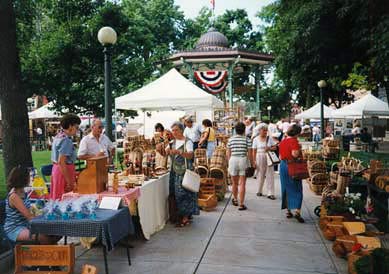You could say Oskaloosa, Iowa, population 11,000, is a model of small-town livability. Families rent apartments over renovated historic storefronts. Local college students take the bike lane down Market Street to grab a bite in the local restaurants. Visitors travel from distant towns to browse the city's local bookstore in its revitalized, walkable town square.
Oskaloosa's vibrancy is owed in large part to Iowa's Main Street program -- a public-private partnership aimed at returning economic competitiveness to historic town centers. Over its 25 year history in the state, this program has encouraged walkability, mixed use development and historic preservation in 47 Iowa communities.

To those who question whether the concept of livability works in rural communities, the answer from Oskaloosa and the Iowa Main Street program is self-evident. The Main Street effort has been credited with attracting $1 billion dollars in private investment -- about $79 private dollars for every public dollar -- according to an economic analysis commissioned by the program. Hardly an exclusive domain of the Hawkeye State, Main Street is a national program of the National Trust for Historic Preservation -- at work in 37 states.
However, some key Republicans have threatened to dismantle efforts to bring these kinds of common-sense investments to communities around the country.
Indeed, Iowa Congressman Tom Latham, whose district is just a few miles from Oskaloosa, is chair of the powerful Transportation and HUD Subcommittee on Appropriations. Latham has questioned whether the concept of "livability" applies in rural communities. And others in the Republican leadership have threatened to cut funding for President Obama's Sustainable Communities Regional Planning program and TIGER grants, efforts that aim to bring important economic and quality-of-life improvements -- as well as overall infrastructure cost savings -- to both rural and urban areas.
In Iowa, the Main Street program is funded through the state legislature. This year, it will cost about $900,000, relying heavily on the volunteer labor of community members. But the program has also benefited from federal support. Since 2002, it has received almost $5 million in federal earmarks, said Thom Guzman, Director of the Iowa Downtown Resource Center at the state's Department of Economic Development. That money has been leveraged to help create 3,400 businesses and a total of more than 10,000 full-time jobs statewide, he estimated.
When the program was begun in Iowa in 1986, the state was reeling from the devastating farm crisis. "Communities across the state were losing population," Guzman said. "The leaders in the state were looking for ways to help address the exodus of population and help bring jobs and population back into the state... Virtually every city that has started and stayed in the program is dramatically different than they were before."
Main Street continues to be a stabilizing force decades later. Officials in Oskaloosa say the program has helped the city weather the terrible recession. In Oskaloosa alone, the Main Street program is credited with the creation of 151 new businesses and 352 new jobs for a total of $15 million in private investment into the city.
"It’s been very very helpful to us," said Jon Sullivan, Director of the Oskaloosa Area Chamber and Development Group. "It has help us rejuvenate what I call the cradle of our community -- the downtown area."
Twenty-five years after becoming a Main Street community, the sustainability push in Oskaloosa continues. The city is in the final stages of completing a 15-mile bike/pedestrian trail. Oskaloosa's trail will be somewhat unique for the area, in that it will be integrated into the street pattern.
Oskaloosa Mayor David Krutzfeldt says the trail will allow families to bike to the city's sports center without using a car. The local seniors have been enjoying it as well, Krutzfeldt said. A local business has been taking nursing home residents out on the trail using motorized carts.
Sullivan said the trail is providing another boost for local businesses. "It just makes people want into come into town," he said.
Officials in Oskaloosa don't see livability as a foreign concept. Krutzfeldt said local leaders' overarching strategy is "having those fresh ideas about how we want to go forward and being innovative about how we do things. Trying to create and energy and vibrancy in the downtown -- we try to keep beating that drum all the time."
It's a strategy that is serving them well.





